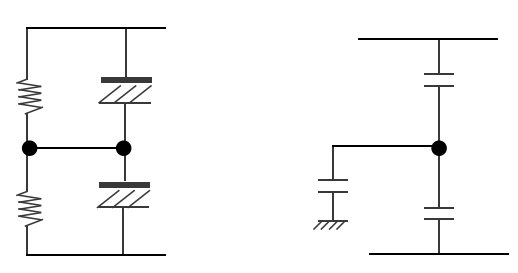Under what circumstances do we need balancing resistors for capacitors?
From: Chris, system engineer, England
Question: I have two circuits shown below, why bleeding resistors in the first case, but not the second case?

Answer: In the first case, two electrolytic capacitors are in series to share the voltage, the resistors there provide two functions, one is to bleed, the other is to balance the voltage sharing of the capacitors. As capacitors always have at least 10% capacitance tolerance, capacitance value is also affected by temperature, ripple current, etc. You wouldn’t want one of the capacitor has larger ripple current compared with the other one. So having two big resistors (hundreds of kΩ or MΩ) help share the voltage evenly between the two capacitors. I would call these resistors balancing resistors.
In the second drawing you have there, it looks like they are film type (assuming the first drawing of the capacitor is electrolytic type). For film type capacitors, you shouldn’t need balancing resistors, because the leakage current of a film capacitor is almost zero. Balancing resistors are needed for electrolytic capacitors because you have quite high leakage current and the leakage also change with age. But film capacitors such as polypropylene or polyester types have virtually 0 leakages, so you don’t need balancing resistors.
In fact, it might make things worse in the second case if you put resistors, because by putting another resistor in parallel with the capacitor you put another pole in the system transfer function. The system is designed that at lower frequency the impedance should be high, but instead, it is going to be limited by the resistors.